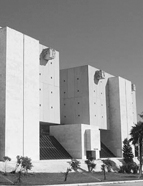

................................
Similar reforms were implemented during the reigns of King Manuel I and King João III between 1504 and 1538, a process known as the Leitura Nova [New Reading]. It involved producing 61 codices on parchment, artistically illuminated, which contained copies of documents transcribed from chancellery books and “drawers” that had become indecipherable for archive staff, who could no longer read older scripts (A. H. de Oliveira Marques, “Leitura Nova,” 1975). Despite the impact it had in terms of document eliminations, the reform initiated by King Manuel I and continued by his father significantly improved the organisation and establishment of the archive, greatly contributing to its exemplary operation .
Unfortunately, during the period of Philippine rule, the archive that had served as a model for the regulation of Simancas saw its collection plundered and mistreated due to various acts of vandalism. This situation is detailed in a report by the scribe Jorge da Cunha, dated May 29, 1631, studied and published by Virgínia Rau ( A Torre do Tombo… , 1945). The depletion of the collection was further exacerbated by destruction caused by natural disasters, such as the 1755 earthquake (P. Azevedo and A. Baião, O Arquivo da Torre... , 1989 [orig. 1905], pp. 16-18). However, it is now known that the actions of the Keeper of the Archives, Manuel da Maia, were crucial in saving the documentation, mitigating the consequences of the collapse of the tower of the Lisbon Castle, where the archive had been housed since at least 1378 (P. Azevedo, “O Engenheiro Manuel da Maia...”, 1917-1918). The documentation retrieved from the rubble was temporarily stored in a wooden shack built in the parade ground of the Castle, where it remained for two years before being moved to the southern wing of the Monastery of São Bento. There, it stayed until 1862, when construction work on the Chamber of Peers required its relocation to the opposite side of the same monastery.
This work is financed by national funds through FCT - Foundation for Science and Technology, I.P, in the scope of the projects UIDB/04311/2020 and UIDP/04311/2020.
